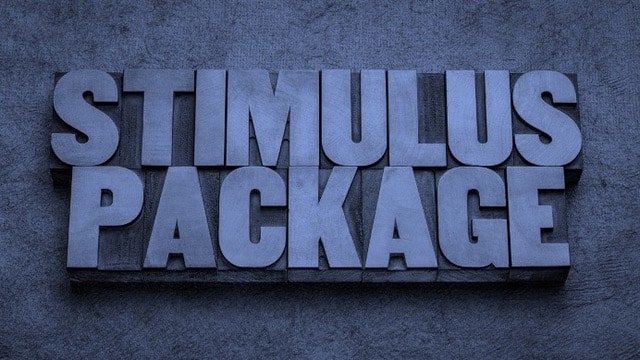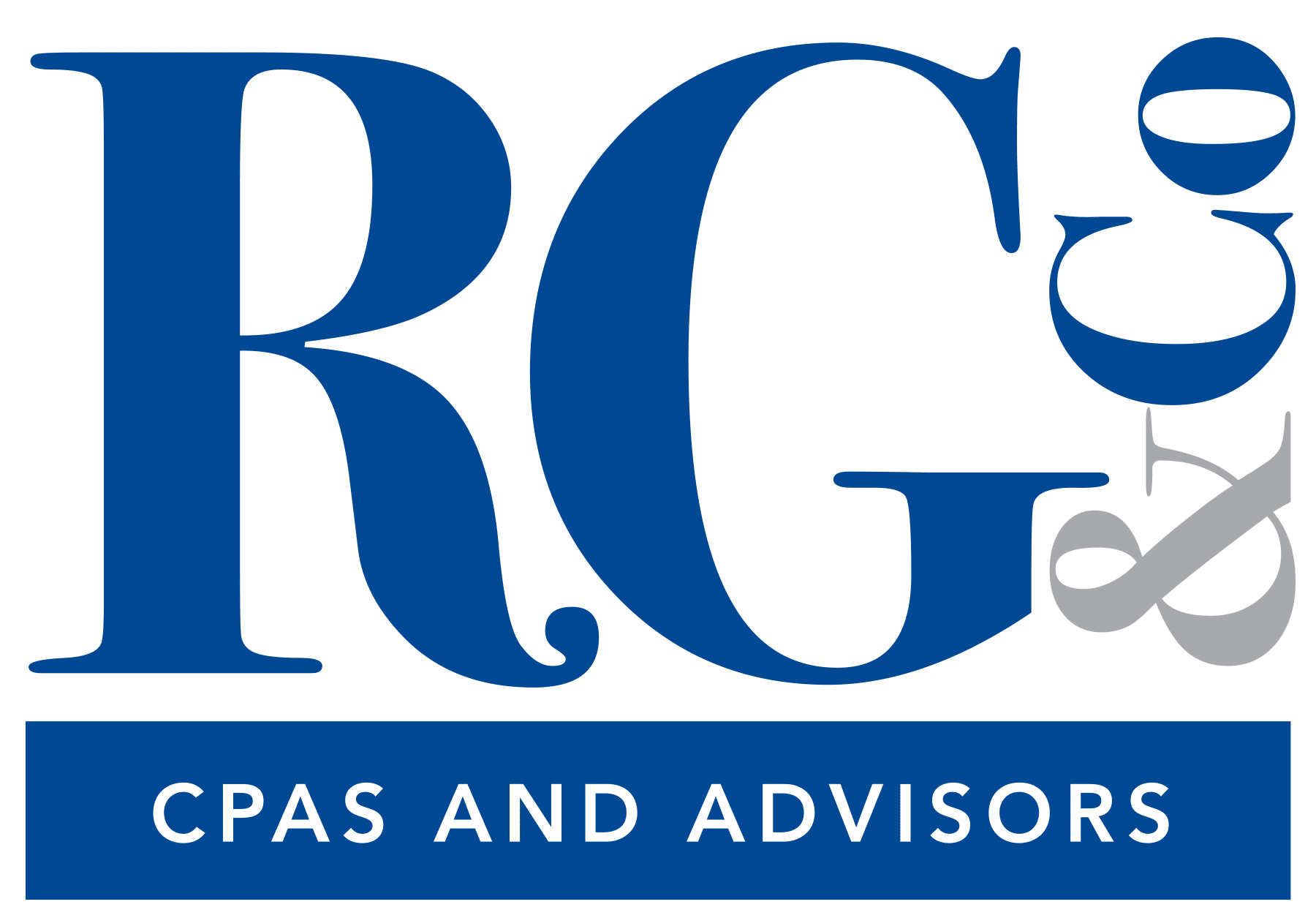- December 28, 2020
- Posted by: Rivero, Gordimer & Company
- Category: Business Advice

On December 21, 2020 the House and Senate agreed to and released the text of the House Amendment to the Senate Amendment to H.R. 133, lovingly known as the “Stimulus Bill, Round 2.”
The Act was signed into law by President Trump on DECEMBER 27, 2020. So, what’s in it?
While the text itself is over 5,500 pages, covering many issues, Departments, Branches of Government and Agencies focused on providing stimulus to all areas, this article will focus on the areas that will impact the work-life of this CPA firm, not that this part is more important than the other.
COVID-related Tax Relief Act of 2020
Included in the Consolidated Appropriations Act is the short title above for certain sections.
Stimulus Payments
The Act provides for another round of immediate cash in the form of advanced credit payments to individuals and other changes to the Code as follows:
| Individual Stimulus Payment | |
| Amounts | • $600 for single filers • $1,200 for married filing jointly • $600 for each child age 17 or under |
| Limitations | |
| • Single Filers | If Adjusted Gross Income (AGI) exceeds $75,000, $5 of payment is lost for every $100 of AGI that exceeds the limit. |
| • Married Filing Jointly | If AGI exceeds $150,000, $5 of payment is lost for every $100 of AGI that exceeds the limit. |
| How and When | • The IRS will begin sending payments in the coming weeks to individuals based on their 2019 tax return or Social Security Statement. • The amount will be paid electronically if Direct Deposit information is on file from 2019 or the prior stimulus payment. • Any payment received will be an advance payment of credit that will need to be recomputed in 2021 with the filing of a 2020 tax return. |
| Charitable Contributions | Charitable contributions are usually itemized deductions. However, this Act allows a taxpayer to deduct up to $600 as an “above-the-line” deduction in computing AGI for 2021. Increases the CARES Act amount of $300 for 2020. |
Payroll Tax Credits
Employers who pay sick leave wages required by FFCRA are entitled to a payroll tax credit. The Act extends the deadline from December 31, 2020 to March 31, 2021.
Unemployment Benefits
$300 per week in additional unemployment benefits will be paid through March 14, 2021.
Employee Retention Credit
The CARES Act added an Employee Retention Credit that is a refundable payroll tax credit available against an employer’s portion of Social Security payroll taxes up to 50% of qualified wages paid by employers to employees during the COVID-19 pandemic. This Bill increases the credit from 50% to 70% beginning after December 31, 2020.
The Bill extends the ERC through July 1, 2021. Additionally, a taxpayer may now claim the ERC and take out a PPP loan (not previously allowed). However, any wages upon which an ERC is computed would not be forgivable costs under a PPP loan. Other modifications are listed below.
| Employers with more than 500 f/t employees (previously 100) | • the credit is available to employers who paid employees when operations were fully or partially suspended due to a COVID-19 related shutdown order, or • gross receipts declined by more than 20% (previously 50%) when compared to the same quarter in the prior year. The employer will be entitled to the credit for each quarter in 2020 until the business has a quarter where its gross receipts exceed 80% of the same quarter in the previous year. |
| Employers with 500 or fewer f/t employees (previously 100) | • all employee wages will qualify for the credit, regardless if the employer is open for business or subject to a COVID-19 related shutdown order, if the gross receipts declined in that quarter compared to the same quarter of the prior year. |
| Limitations | • The Credit is provided for the first $10,000 per quarter of compensation, including health benefits, paid to each eligible employee. • The total qualified wages cannot include any wages considered in determining the new payroll tax credit for Family Medical Leave or Sick Leave as part of the CARES Act. • The credit is provided for wages paid or incurred from March 13, 2020 through December 31, 2020. • The Employee Retention Credit is not available if an employer takes out a Paycheck Protection Loan under Section 7(a) of the Small Business Act (discussed earlier). |
PAYCHECK PROTECTION PROGRAM
Continuing PPP – Economic Aid to Hard-Hit Small Businesses, Nonprofits, and Venues Act
Included in the Consolidated Appropriations Act is the short title above for certain sections.
Expanded Original Paycheck Protection Program
Funds have been earmarked for borrowers who have NOT yet applied for any PPP loan. 60% of costs must be spent on payroll, but 4 new categories of “non-payroll” costs have been added. These cost categories are defined and sorted as covered operations expenditures, covered property damage costs, covered supplier costs, and covered worker protection expenditures.
Clarification of Tax Treatment of Forgiveness of PPP Loans
The Act clarifies the original intent of the CARES Act that forgiven PPP loans are not taxable. Further, it clarifies that no deduction generated or funded by forgiven PPP loans will be denied, no tax attribute shall be reduced, and no basis increase shall be denied. This change makes obsolete the IRS Notice 2020-32 and subsequent Revenue Ruling 2020-27 which would make deductions funded with forgiven PPP loan dollars non-deductible. After some debate back and forth, the ordinary and necessary §162 expenses paid will be deductible, without limit or guardrails.
Simplified Forgiveness Application of Original PPP Loans $150,000 or Less
A “one-page” document is to be produced by SBA providing for the forgiveness of a PPP loan of not more than $150,000. We are not sure if this will just expand on the already produced Form 3508S for loans $50,000 or less. Either way, only a description of the number of employees the recipient was able to retain because of the loan, the estimated amount of the loan spent on payroll costs, and the total loan amount. Attestations by the borrower will be required as with other PPP forgiveness applications. Normal substantiation requirements have been removed as well, making this process a so-called “rubber stamp.”
Paycheck Protection Program Second Draw Loans
Section 7(a) of the Small Business Act is amended by adding Paragraph (37) for Second Draw Loans. Eligible entity (a defined term) includes any business concern, certain non-profit organizations, etc. that employs not more than 300 employees and had gross receipts during any 2020 quarter that are at least 25% less than the same quarter for 2019. Special rules apply for businesses not in business for certain quarters in 2019. Business concerns engaged in political or lobbying activities or those with affiliations with China may not be permitted to apply.
PPP Loan Program Expansion to Certain Nonprofit Entities
The Act expands the PPP Loan program to certain 501(c)(6) organizations and nonprofit destination marketing entities. For these entities to be eligible, they must have under 300 employees and meet certain thresholds regarding lobbying activities. These thresholds include not receiving more than 15% of its receipts from lobbying, not exceeding 15% of total activities on lobbying activities, and total lobbying costs do not exceed $1,000,000 in the most recent tax year.
PPP 2nd Loan Amount
The maximum loan amount for a Second Draw will be at the election of the eligible entity, the LESSER OF the product obtained by multiplying the average total monthly payment for payroll costs incurred or paid by the entity during either 1) the one-year period before the date on which the loan is made; or 2) calendar year 2019 TIMES 2.5; or $2,000,000. The previous PPP loan cap was at $10,000,000.
For businesses under North American Industry Classification System 72, the multiple above is increased to 3.5.
NAICS Sector 72 Industries: Defined as The Accommodation and Food Services sector comprises establishments providing customers with lodging and/or preparing meals, snacks, and beverages for immediate consumption. The sector includes both accommodation and food services establishments because the two activities are often combined at the same establishment. Excluded from this sector are civic and social organizations; amusement and recreation parks; theaters; and other recreation or entertainment facilities providing food and beverage services.
Covered Period
The covered period under Second Draw loans will begin on date of funding and end during the period not less than eight weeks after loan origination and no more than 24 weeks after such date. This eases confusion for borrowers who qualify for forgiveness earlier than 24 weeks, but who need more than 8 (confusion borne during the first round of PPP).
Use of Second Draw Proceeds
As before, payroll, utilities, rent, and mortgage interest are allowable plus the four new categories added above for first-time borrowers. 60% must be used for payroll costs. Additionally, forgiveness reductions for reduced pay rates or headcount exists, with exceptions, of course, for restorations made. The confusing thing is that it mentions restorations must be made by December 31, 2020, which doesn’t make sense for Second Draw covered periods. Technical corrections may be in order and based on other dates in the Act; September 30, 2021 seems likely.
Economic Injury Disaster Loans (EIDL)
$20B allocated to businesses in low-income communities.
100% Deduction for Business Meals
Business meals purchased in 2021 and 2022 normally limited to 50% will be fully deductible. This is an effort to revive the restaurant industry.
Please contact your Tampa Accounting experts at Rivero, Gordimer and Company with any questions to help guide you through this maze of uncertainty. We’re all in this together. Be safe.

